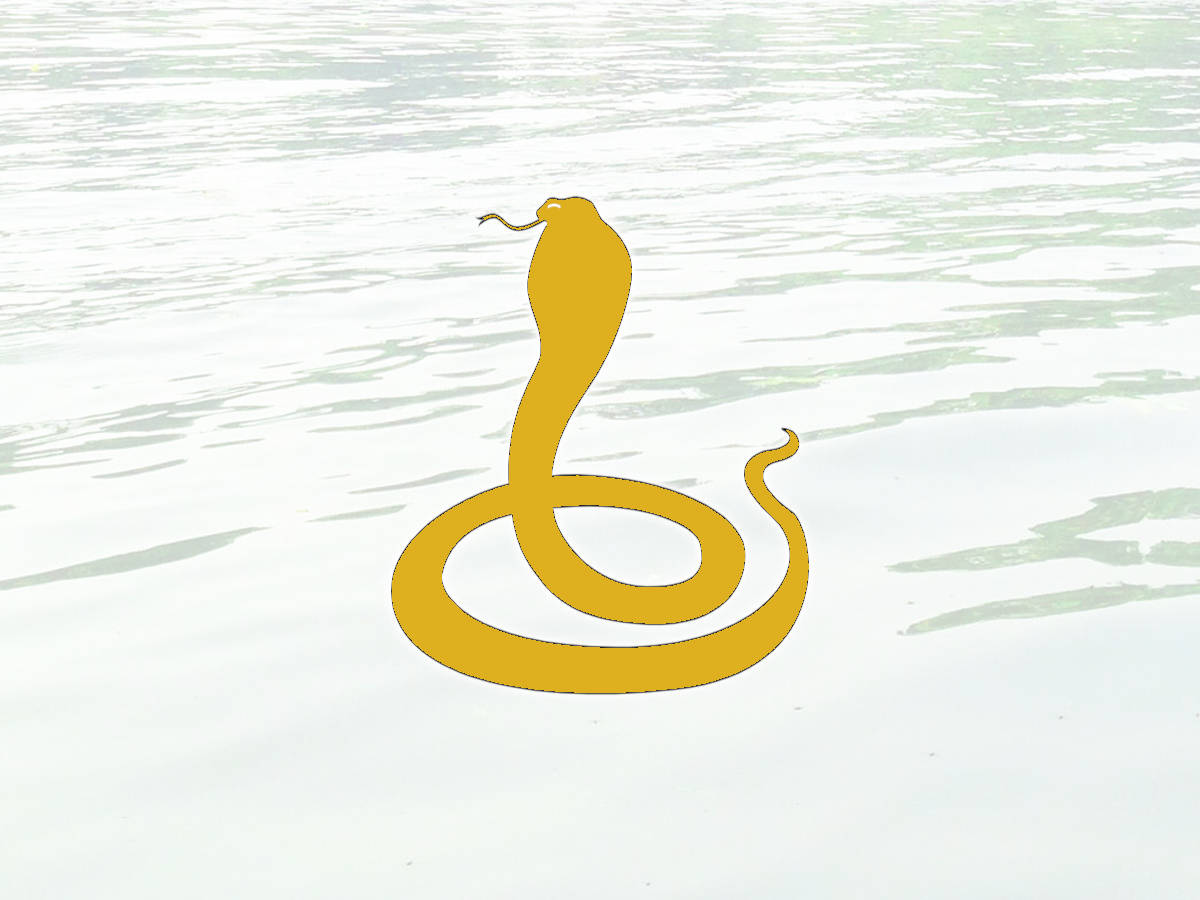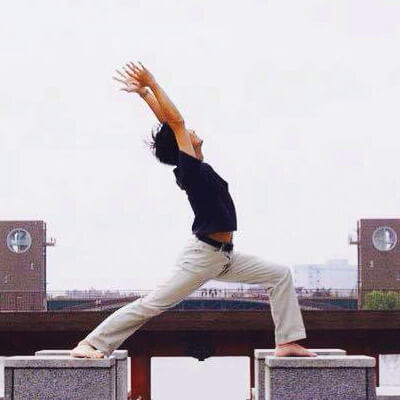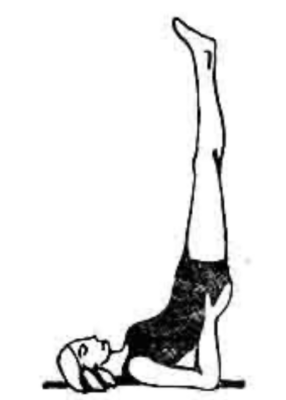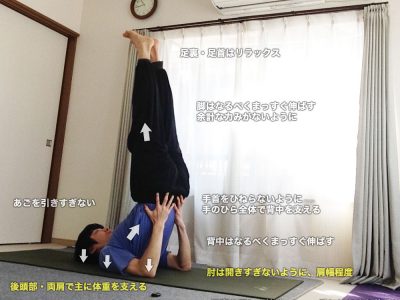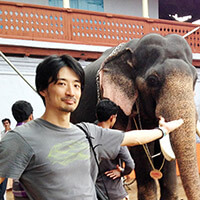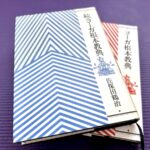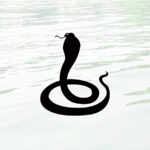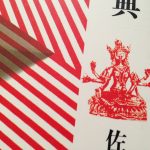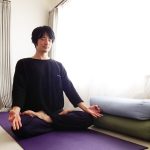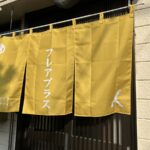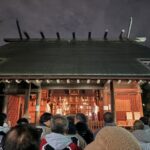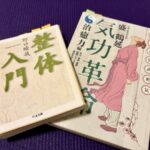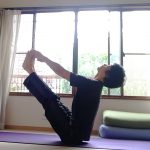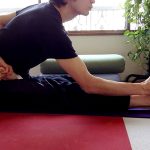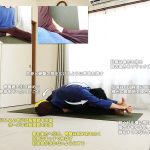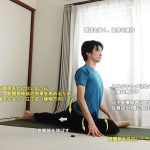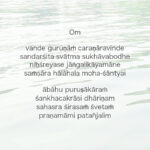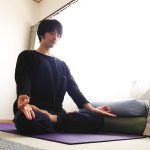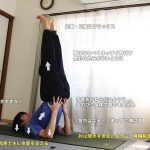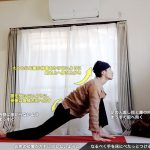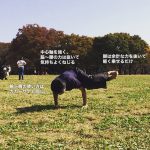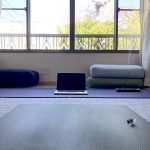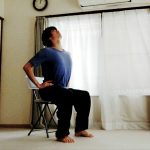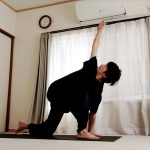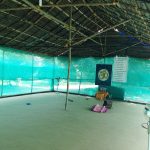「クンダリニー・タントラ/スワミ・サティヤナンダ・サラスワティ著」を読み進めていく形で、クンダリーニヨガ(クンダリニーヨーガ)の概要を紹介していく連載記事です。
「Kundalini Tantra 英語版 ペーパーバック」 Swami Satyananda Saraswati (著)
「Kundalini Tantra 英語版 Kindle」 Swami Satyananda Saraswati (著)
今回は、第3章の9節、ヴィシュッディチャクラ覚醒の行法のやり方に関する部分です。
ヴィシュッディチャクラ自体の詳しい説明は、以下の記事を参考にしてください。
以下、引用部分の太字強調は私が個人的に重要と思ったところを示したものです。
この記事の目次
ヴィシュッディチャクラ覚醒の流れ
Vishuddhi chakra can be directly awakened through the practices of jalandhara bandha, vipareeta karani asana and ujjayi pranayama, all of which are essential for eventual mastery of kriya yoga.
ヴィシュッディチャクラは、ジャーランダラバンダ、ヴィパリータカラニーアーサナ、ウジャイプラーナーヤーマの実践によって直接的に覚醒でき、これらはまた最終的にクリヤーヨーガをマスターする上で不可欠であるといいます。
ヴィシュッディチャクラに密接に関係している小さなチャクラであるララナチャクラは、軟口蓋の位置にあり、これはヴィシュッディチャクラの覚醒を直接助けることができるといわれます。
そのため、アムリト・パンと呼ばれるクンダリニー・クリヤー(3章の後のほうの節で説明されます)はそこに直接刺激を加えます。この節では、よりシンプルにララナチャクラを覚醒する行法として、ケーチャリームドラーが示されます。
Perfect these vishuddhi chakra practices over a period of one month and then start the practices for bindu visarga. The sadhana for the other chakras can also be continued with a few selected techniques from each chakra as follows:
ajna – trataka and shambhavi mudra
mooladhara – moola bandha and nasikagra mudra
swadhisthana – chakra and ksbetram location, vajroli (or sahajoli)
manipura – chakra and kshetram location, uddiyana bandha and nauli
anahata – chakra and kshetram location, ajapa japa.
ヴィシュッディチャクラ覚醒の行法を1ヶ月間行い、その後、ビンドゥ・ヴィサルガ覚醒の行法へ向かいます。これまでに行ったチャクラへの行法は、以下に示すようにいくつかの行法を選んで続けるようにせよと指示されています。
- アージュニャーチャクラ:トラータカ、シャーンバヴィー・ムドラー
- ムーラダーラチャクラ:ムーラバンダ、ナシカグラ・ムドラー(ドリシュティ)
- スワディシュターナチャクラ:チャクラとクシェートラムの位置を把握する行、ヴァジローリームドラー(男性)・サハジョーリームドラー(女性)
- マニプーラチャクラ:チャクラとクシェートラムの位置を把握する行、ウディヤナバンダ、ナウリ(可能ならば)
- アナーハタチャクラ:チャクラとクシェートラムの位置を把握する行、アジャパ・ジャパ
ヴィシュッディチャクラ覚醒の準備に適したアーサナ
Many asanas can be utilized for purifying vishuddhi chakra. The most important are: bhujangasana, sirshasana, matsyasana, supta vajrasana and sarvangasana.
ヴィシュッディチャクラを浄化するアーサナとして、ブジャンガーサナ(コブラのポーズ)、シルシャーサナ、マツヤーサナ、スプタヴァジュラーサナ、サルヴァンガーサナが特に役立つと示されています。
アナーハタチャクラの浄化の際にも出てきましたが、スプタヴァジュラーサナは、仰向けの割座の状態からマツヤーサナのように背骨を反らして頭頂を床につく形です。
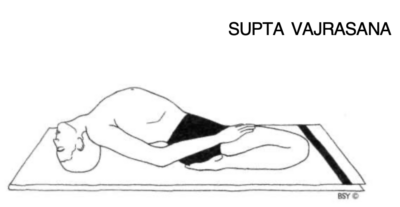
(画像出典:Asana Pranayama Mudra Bandha)
行法1:ジャーランダラバンダ
主要な3つのバンダのうちの一つ、ジャーランダラバンダは喉のチャクラにアプローチするために重要な行法です。
参考:バンダとは|ヨガポーズをキープするコツ・呼吸法の効果の高め方
Sit in any meditative pose which allows the knees to firmly touch the floor. Those who cannot sit like this can practise Jalandhara bandha standing. Place the palms of the hands on the knees
瞑想に適した坐法で坐ります。両膝をしっかり床に置くようにします。それができない場合は、立って行うようにします。
Close the eyes and relax the whole body. Inhale deeply, retain the breath inside and bend the head forward, pressing the chin tightly against the chest (particularly the sternum).
目を閉じて全身をリラックスします。深く息を吸って止め、首を前に曲げてアゴをしっかり胸骨につけます。
両手を膝に置き、腕を伸ばしてしっかり固定します。肩をすくめて、前へ出します(巻き肩のような状態)。
その状態で、できるだけ息を長く止めてキープします。
息を止めていられなくなったら、肩をリラックスして腕を曲げ、顔を前へ向けて、息を吐きます。
呼吸が落ち着いたらこれを繰り返し、5回行います。
Note: The whole practice can also be performed with the breath retained outside.
* Never inhale or exhale until the chin lock has been released and the head is upright.
* Persons with high intracranial or blood pressure, or with heart ailments, should not practise without expert guidance.
長時間キープするのは難しくなりますが、息を吐いて止めた状態で行うこともできます。
アゴを胸につけている間は、息を吸ったり吐いたりしないようにします。
頭蓋内圧が高い人、高血圧の人、心臓病のある人は、経験ある師匠の指示を受けて実践するようにします。
行法2:ケーチャリームドラー
Close the mouth and roll the tongue backward so that the normally lower surface touches the upper palate. Try to bring the tip of the tongue as far back as possible without strain. Keep it there for as long as it is comfortable. If you experience discomfort, relax the tongue for a few seconds and repeat. After some practice the tongue may be able to extend beyond the palate and up into the nasopharynx, where it will stimulate many vital nerve centers.
口を閉じた状態で、舌を上へ向けて巻き上げます。通常は口蓋に舌が当たりますが、それをなるべく後ろへ後ろへと引き込み、力まないようにできるだけ長くその状態を保ちます。
違和感があったり疲れたりしたら、少しリラックスしてから繰り返します。
練習を重ねることで、舌はだんだんと伸びて、口蓋を越えてより奥のほうの鼻咽頭まで舌を到達させることができ、そこは脳幹に近い位置のため、多くの神経中枢を刺激することができるようになるといいます。
Breath: Breathe normally during this practice unless ujjayi is used.
Over a period of a few months, however, it is usual to reduce the breathing rate to 7 or 8 breaths per minute. With careful practice, preferably under expert guidance, the respiration rate can be further reduced.
ウジャイ呼吸を使わない場合は、自然な呼吸を続けながら行います。
呼吸はだんだん少なくゆっくりにしていき、1分間に7〜8回程度にしていきます。可能であれば信頼できる師匠の指示のもとで、注意深く実践を続け、さらに呼吸は減らしていきます。
舌の下にある筋を少しずつ切っていくことで舌を伸ばしていくというやり方が示されている教典もありますが、ここではそれはすすめないという方針です。もし行うとしたら、信頼できる師匠の直接指導のもとで行うべしと指示されています。
参考:ハタヨーガプラディーピカー概説 3.32-3.54 〜ケーチャリームドラーのやり方と重要性〜
行法3:ウジャイ・プラーナーヤーマ
ウジャイの発音は「ウッジャイ」に近く、ウッジャイ、ウッジャーイーなどと表記されることもあります。
アシュタンガヨガなどで行われるウジャイ呼吸は、声門の収縮に加えて、下腹部と骨盤底を収縮させ、胸式+αの呼吸を行います。
参考:胸式呼吸(胸式+α呼吸)ができない方・太陽礼拝のジャンプでふわっと感を出したい方へのコツ・練習法
Practise khechari mudra. Contract the glottis in the throat. When you breathe under these circumstances, a very soft snoring sound should automatically come from the throat region.
ケーチャリームドラーを行いながら、喉の声門を収縮して呼吸します。その状態で呼吸すると、赤ん坊の寝息のような音が自然に喉のエリアから響きます。
鼻を通してではなく、喉を通して呼吸しているのを感じます。
呼吸はなるべく長く、リラックスし、最初は2分間程度行って、徐々に時間を長くしていきます。
行法4:チャクラとクシェートラムの位置の把握・浄化
Place a finger of one hand on the glottis (the lump at the front of the throat). This is the location point of vishuddhi kshetram. Then place a finger of the other hand on the spine, directly behind the kshetram. This point in the spine is called vishuddhi chakra.
鏡の前に向かって坐るか立つかして、指を声門の位置に置きます。そこがヴィシュッディチャクラのクシェートラムです。(喉仏、甲状軟骨の中心あたり)
もう片方の手の指を、その真後ろの背骨に置き、その位置の背骨の中にあるのがヴィシュッディチャクラです。
背骨に置いている指をしっかり1分間押して、感覚を覚えます。指をおろしたあと、感覚が残っている位置に集中しながら、「ヴィシュッディ、ヴィシュッディ…」と唱えます。
Sit in a comfortable position with the back straight. Close the eyes and become aware of the breath. Fold your tongue back into khechari mudra and practise ujjayi pranayama.
快適な坐法で坐り、背骨をまっすぐに保ちます。目を閉じて、呼吸に気づきを向けます。
ケーチャリームドラーとウジャイプラーナーヤーマを数分間行い、喉を通る音に意識を向けながら、呼吸をゆっくり深くしていきます。
Then with inhalation, imagine that the breath is being drawn in through vishuddhi kshetram at the front of the throat. Feel that the breath passes through the kshetram and eventually pierces vishuddhi chakra in the spine.
With exhalation, feel the breath move from vishuddhi chakra, forward through the kshetram and eventually out, in front of the body. This is one round. Continue for a few minutes. Daily practice in this manner will gradually develop your sensitivity to vishuddhi chakra and kshetram.
吸う息で、ヴィシュッディチャクラのクシェートラム(喉仏)から息が入ってきて、そのまま後方の背骨の中にあるヴィシュッディチャクラへ流れ込むようにイメージします。
吐く息で、ヴィシュッディチャクラから息が前方へ、クシェートラムを通って出ていくようにイメージします。
これを数分間繰り返します。毎日行うことで、ヴィシュッディチャクラとそのクシェートラムへの感覚が磨かれていくといいます。
行法5:ヴィパリータカラニーアーサナ
The inverted attitude
仰向けに寝て、足をそろえます。腕は体側に置き、手のひらは床に置きます。
息を深く吸い、腕でサポート(床を押す)しながら脚を挙げて頭の向こうへ運び、脚はまっすぐ伸ばします。腕を曲げて、手をお尻の下(腰)あたりに置き、体を支えます。
脚を垂直に持ち上げて、深く呼吸しながら、意識を呼吸に置きます。目は閉じておきます。
このポーズは現代ヨガでもよく行われるのですが、「目を閉じる」と明確に指示されているのは珍しい感じがしました。ポーズの形そのものよりも、喉を通る呼吸の流れへの意識を磨くためという意味もあるように思えます。
また、脚を「垂直に」という明確な指示もあります。意外とこれは難しいと感じる人も多いかもしれません。
Note: Vipareeta karani asana is similar to sarvangasana, except that the chin is not pressed against the chest and the trunk is held at a 45 degree angle to the ground instead of at right angles.
ここで、似ている肩立ちポーズであるサルヴァンガーサナとの違いが説明されています。サルヴァンガーサナでは体幹はより垂直に近くなるため、アゴが胸についています。ヴィパリータカラニーアーサナでは、体幹は45°くらいの角度になるため、アゴは胸にはついていません。
参考:サーランバサルヴァンガーサナ(ショルダースタンド・肩立ち)の効果とやり方動画・図解
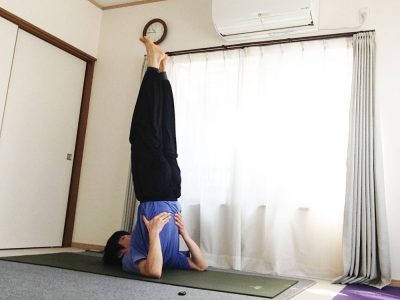
以下の過去記事でヴィパリータカラニーの説明をしていますが、現代ヨガではサルヴァンガーサナの軽減版という目的や、リラックスポーズ的なポーズとして用いられることが多いため、脚は無理に垂直にはしていません。
* Shavasana is the counterpose and should be done for a few minutes on completion of vipareeta karani asana.
* Advanced practitioners can hold the posture for 15 minutes or even more; beginners should practise for a few seconds and add a few seconds daily.
* This asana should not be done by sufferers of thyroid, liver or spleen enlargement, high blood pressure or heart ailments.
* Vipareeta karani asana is widely used in kundalini yoga since it helps to redirect the energies of the body from the lower to the higher chakras. It is an integral part of the first of the kundalini kriyas called vipareeta karani mudra.
シャヴァーサナはカウンターポーズとして、ヴィパリータカラニーアーサナを終えた後に数分間行うと良い、と示されています。
初心者はまず数分間行い、数秒ずつ長くしていき、上級者は15分以上長い時間行っても良い、と指示されています。
甲状腺、肝臓・脾臓肥大、高血圧、心臓病の人は行わないようにします。
ヴィパリータカラニーアーサナはクンダリニーヨーガにおいて、重要なポーズとして広く活用されており、それは低位のチャクラから高位のチャクラへのエネルギーの流れをつくりだすからであるといいます。後に紹介される、統合的な実践であるクンダリニー・クリヤーの中の最初の一つとして、ヴィパリータカラニームドラーが示されます。
ヴィパリータカラニーアーサナとヴィパリータカラニームドラーの違いは、後に説明されますが、ウジャイプラーナーヤーマを用いたり、各チャクラを通るエネルギーのイメージが加わるなど、見た目上はあまり変わりませんが、意識や呼吸が大きく異なっています。
次記事:「クンダリニー・タントラ」を読む【47】第3章 10節:ビンドゥ・ヴィサルガの覚醒方法
前記事:「クンダリニー・タントラ」を読む【45】第3章 8節:アナーハタチャクラの覚醒方法
参考文献
「Kundalini Tantra 英語版 ペーパーバック」 Swami Satyananda Saraswati (著)
「Kundalini Tantra 英語版 Kindle」 Swami Satyananda Saraswati (著)
「クンダリニー」ゴーピ・クリシュナ (著), 中島巌 (翻訳)
「Asana Pranayama Mudra Bandha 英語版」Swami Satyananda Saraswati (著)

